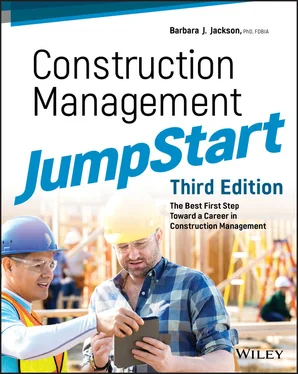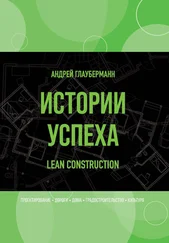No construction would ever be accomplished without owners. They are the driving force behind the construction industry. Their demands for housing, commercial facilities, industrial products, and infrastructure are the chief motivation to build. After determining need and deciding to build, the owner is accountable for four primary duties:
A written statement that identifies and describes an owner or end user's needs and requirements for a facility. Every design starts with a program.
Developing the program and outlining the needs and requirements of the end users
Determining the quantity, extent, and character of the project by defining the scope of work
Creating the overall budget for the project, including land acquisition (if necessary), development, design, and construction costs
Providing the funding for the project and making periodic payments to the designers and the contractor
How an owner accomplishes these tasks is often determined by what type of owner they are. There are basically two types of owners—public owners and private owners. Public owners are typically government agencies such as the General Services Administration, the Army Corps of Engineers, or the state departments of transportation. These agencies represent the public and spend tax dollars to build courthouses, military bases, and federal highways. Private owners make up the bulk of construction spending and may take the form of an individual building a single home, a developer who builds speculatively, a small manufacturer enlarging operations, or a national firm that owns numerous facilities. Funding comes from private sources such as banks, investment brokers, and venture capitalists.
Two types of professional designers are engaged in the construction process, and each deals with different parts of the project design. Architects deal with the function, life safety issues, and aesthetics of the building, and engineers deal with the systems. They typically work together to complete the design function with one or the other taking the lead, depending on the type of facility being constructed.
I will use the term designer throughout the text to imply either an architect or an engineer.
The construction manager works with both the architect and the engineer on a regular basis throughout the construction process. The following are the primary responsibilities of the designers:
Assisting the owner in developing the facility program and determining end user needs and requirements
Advising the owner regarding the image and character of the facility and establishing broad design goals
Assisting the owner in selecting products to fit the program and the budget
Advising the owner on special and aesthetic issues and generating graphic solutions to problems
Developing the final building plans, construction details, and specifications
To better understand the distinctions between architectural design and engineering design, consider the human body. Just as a body has a particular functional design with arms, legs, and a head, as well as skin and hair to protect it from the elements, so does a building with various rooms, porches, stairs, an exterior cladding of brick or siding, and shingles or asphalt on the roof to keep it dry. The body has a skeletal system to keep it straight and upright, and a building has a structural frame to keep it straight and upright. The body has a circulation system to move blood and nutrients. A building has a plumbing and mechanical system to move water, waste, heat, and air conditioning. The body has a central nervous system to send energy to our legs and arms. A building has an electrical and communications system to send messages and deliver power to our offices and living spaces. Basically, architects deal with the arms, legs, hair, and skin, and engineers deal with the bones, blood, and nerves.
Architects are licensed professionals trained in the art and science of building design. They transform the owner's program into concepts and then develop the concepts into building images and plans that can be constructed by others. In addition to completing a four- or five-year college program, architects are also required to have a number of years of experience and pass an exam before they can become licensed.
Architects design the overall aesthetic and functional look of buildings and other structures. The design of a building involves far more than its appearance. Buildings also must be functional, safe, and economical, and they must suit the needs of the people who use them. Architects also specify the building materials and, in some cases, the interior furnishings. In developing designs, architects follow building codes, zoning laws, fire regulations, and other ordinances, such as those requiring easy access by people who are disabled. Several specific roles within the typical architect's office support the architectural design function:
Design architects Design architects are the creators of the aesthetic solution—they are the concept and idea people. Although most design architects can only hope to achieve celebrity status, some become quite famous. As previously mentioned, we often recognize their names in association with their creations—Frank Lloyd Wright, Alvar Alto, I.M. Pei, Julia Morgan, and Frank O. Gehry, to name a few. They are sometimes referred to as signature architects. Owners often seek them out because of their reputations. They are typically the senior associates or principal partners within the architectural firm. Their function first and foremost is to come up with the creative expression. They convey their ideas to their design staffs through sketches and schematic renderings. They do not typically engage in the actual production of the construction drawings. They are supported by architectural technicians and specification writers in the preparation of the final construction documents.
Architectural technicians Architectural technicians are typically the drafters of the building plans. They are the ones who actually produce the drawings that are used for construction. They work from preliminary sketches and concept drawings provided by the design architects. However, the days of sitting at a drawing board with a mechanical pencil in hand using a T-square and a triangle are all but gone. Today, drafters have become computer operators and produce their drawings electronically using computer-aided design (CAD) software. Some CAD operators have expanded their skills to include 3D building information modeling (BIM) as well. As the trend toward information modeling continues, these technicians will become more and more valuable in the marketplace.
Specification writers Accompanying the plans for a new building is a written project manual that contains the specifications for the project. The plans and specifications compose two parts of the legal contract for construction. (A third component is the contract forms themselves.) The specification writer is responsible for spelling out the specific products and methods that are to be used on a project in order to ensure a particular level of performance and quality.
Engineers are usually the lead designers for heavy civil and industrial projects. Engineers are regulated by professional licensing requirements that include a four- or five-year college program, a specific number of years of experience, and the passing of a professional licensing exam. However, in building design, they are most often hired as consultants by the architects. In this scenario, they have no direct contact with the owner.
Читать дальше












